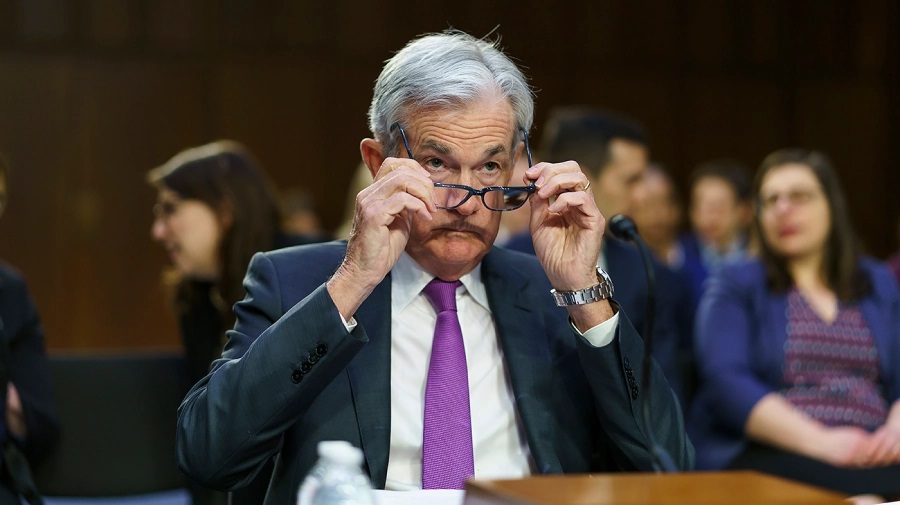
Fed's Monetary Trap Interest Rate Hikes and the US Financial System Crisis
How Central Banks Navigate Complex Monetary Challenges to Secure Economic Futures
The Federal Reserve lent $303 billion to US banks last week to stabilize the turmoil in the financial system. This move fuels inflation and puts the Fed in a difficult position as it continues to fight inflation by raising interest rates. The US annual inflation rate stands at 6% as of the end of February, far from the Fed's goal of price stability at 2%. Fed Chairman Jerome Powell stated that interest rates will not drop soon and might even increase more rapidly to maintain a high level for an extended period.
The collapse of Silicon Valley Bank (SVB) due to a liquidity crisis, followed by the collapses of crypto-specialized banks Silvergate and Signature, sent bank shares to sharp declines. The Federal Deposit Insurance Corporation (FDIC) announced that it would guarantee all funds in SVB to the extent of approximately $180 billion. However, this failed to calm the financial industry, as another American bank, First Republic, found itself in the eye of the storm.
In Europe, Switzerland's second-largest bank, Credit Suisse, reported a loss of 7.2 billion Swiss francs, the largest since the 2008 global economic crisis. UBS, Switzerland's largest bank, is reportedly in talks to acquire Credit Suisse, and Blackrock, the world's largest asset manager, is also in the picture of the purchase.
The Fed's $303 billion relief program effectively offset half of the quantitative easing initiated to combat inflation. The Fed's balance sheet now stands at $8.64 trillion. This expansionary rebound brought back the rally in technology stocks, with Microsoft, Alphabet, Apple, and Amazon adding $560 billion to their market value last week. The Nasdaq 100 rose 5.8% this week, and Bitcoin's value jumped 30% in the last seven days.
The Fed's Open Markets Committee will meet this week to decide on the US interest rate level, with the possibility of raising the interest rate by 0.25%, down from the previously estimated 0.5% increase. This comes as the US economy experiences record levels of debt, growing private consumption, and rising inflation. The road to curbing inflation is longer than expected, and the Fed's rapid interest rate hikes are permeating the American economy.
The prime interest rate in the US has reached 7.75%, the interest rate on mortgages has jumped to more than 7%, and the interest rate on credit card debt averages 24.08%. However, consumer credit continues to grow. This situation, in which the interest rate continues to climb while the economy boils and credit grows, cannot continue for long.
The total debt of the entire American economy stands at over $95 trillion, and the world's total debt exceeds $300 trillion. A dramatic increase in financing costs, in an environment of rising interest rates and a cooling economy, will force companies to reduce expenses, especially wages. The high interest rate will eventually lead to a real slowdown in economic activity, increasing the debt burden relatively as economic activity shrinks. The first signs of economic contraction are already visible, and the Fed's monetary trap continues to pose challenges in balancing the fight against inflation and maintaining financial stability.
Read More
-
UCO ETF Price Forecast: Can NYSEARCA:UCO at $18.57 Ride a 2026 Oil Squeeze?
18.12.2025 · TradingNEWS ArchiveStocks
-
XRPI at $10.50 and XRPR at $14.93 Hit XRP ETF Lows While XRP-USD Holds $1.84 After 30 Days of Inflows
18.12.2025 · TradingNEWS ArchiveCrypto
-
Natural Gas Price Forecast: Henry Hub Holds Around $4 as EIA Draw Hits 167 Bcf
18.12.2025 · TradingNEWS ArchiveCommodities
-
USD/JPY Price Forecast: Pair Holds Above 155 As BoJ And US CPI Set Up A Major Break
18.12.2025 · TradingNEWS ArchiveForex


















